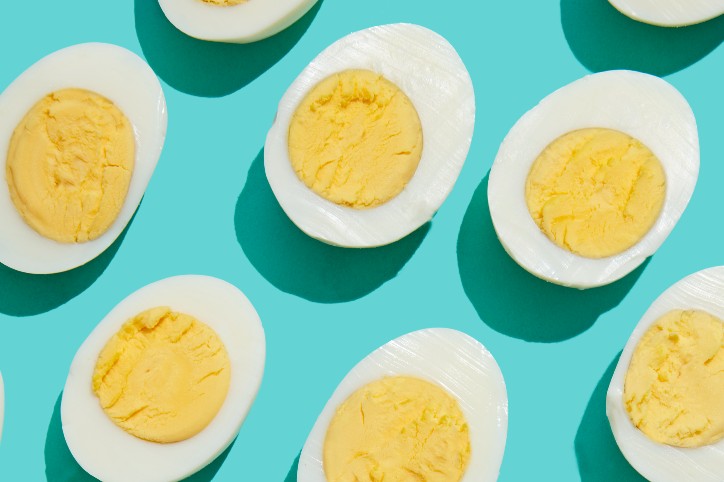We all know that when we’re pregnant or breastfeeding, that isn’t the time to diet, but after – game on. Now first let’s clear up something. A diet isn’t just about weight loss. A diet is a pattern of eating (like vegan or kosher). It’s meant to be sustainable. Getting enough protein in a diet is key for weight loss (as is getting enough fiber) and while most of of us in the U.S. are over-served protein, that’s not the case for everyone.
Why is protein important?
“Protein is an essential part of the diet as proteins are the building blocks of our muscles, tissues, blood vessels, hair, skin and nails and produce enzymes and hormones which are necessary for our bodies to function normally,” says Tanya Zuckerbrot MS, RD, the founder of F-Factor.
Below she outlines the main benefits:
- Proteins are needed for growth and repair of every cell in our body.
- Proteins are made up of amino acids which are the raw materials needed to make and repair our skin, muscles, bone, blood, and organs.
- We need a constant supply of proteins in our diet to make and repair our cells and this is especially important during times of growth such as childhood, adolescence, pregnancy and while breastfeeding.
- Proteins also help regulate our bodily function. Protein makes up the enzymes and hormones needed for optimal body function
-
- Examples:
-
-
- Insulin and glycogen are hormones that are crucial for maintaining normal levels of blood glucose
- Actin and myosin are muscle proteins that help muscles contract and allow your body to move.
- Hemoglobin is a protein that helps transport the oxygen in blood to body cells.
-
- Energy – Along with carbohydrates and fats, proteins supply energy to the body:
- 4 calories per gram of protein
- The body can convert protein to glucose and use it to fuel brain function. However, proteins are not the body’s preferred fuel source and .
- TIP: Eat enough carbohydrates so that protein can focus on it’s primary functions listed above
What is the recommended intake?
“Protein needs depend greatly on the individual; gender, weight status, health status and level of activity all have an impact on protein needs,” says Zuckerbrot. “A male athlete will need more protein than a sedentary male to fuel activity and a burn victim will need more protein than a healthy individual to promote wound healing and help rebuild tissue and muscle loss. Medical history specifically plays a large role in determining someone’s protein needs. Chronic conditions, autoimmune diseases, cancers, and other diseases may increase or decrease protein needs.”
But in general, she says, you can determine yours using the following equation:
- 0.8g of protein per kg of total body weight per day.
- ~10-35% of total calories per day.
For weight loss and management, F-Factor recommends females eat 3-4 ounces of protein at meals and 1-2 ounces of protein at snack; for men: 6-8 oz at meals and 2-3 oz at snack
- This is more than the 0.8 g/kg mentioned above, so there is no risk for protein deficiency
Examples of 20g of protein
- 2 scoops of F-Factor 20/20 FIBER/PROTEIN Powder
- ~6oz. Greek Yogurt (1 Chobani container)
- 3 eggs
- ~4 oz tempeh
- ~3 oz. chicken breast (size of deck of cards or palm of your hand)
But, how can we tell if we are not getting enough protein?
- Muscle loss or weakness, increased risk of stress fractures and joint pain –
“Without enough protein your body can’t make or repair body cells adequately. Instead, protein in body tissues, including muscle, break down, releasing their pool of amino acids for recycling.” - Brittle hair and nails – “Since hair and nails are mostly made up of protein, a protein deficiency would lead to dry and brittle hair and nails.”
- Fatigue or hunger/cravings – “If you’re not eating enough protein, it’s possible you’re not taking in enough calories overall to fuel energy needs. The body will first tap into fat stores for fuel, and then muscle protein for energy. If this happens you may experience fatigue or hunger/ cravings.”
- Living in an underdeveloped country – “Protein deficiency is more common in lesser developed places in the world, where there is extreme poverty and a more limited food supply. In such places, children are especially at risk.”
Below Zuckerbrot outlines some healthy, protein-rich options and the portion size appropriate for the average woman.
- Chicken Breast – contains all essential amino acids, easy to find and versatile
- Portion size: 3-4 oz
- Amount of protein per serving: 20-25g protein
- Egg – contains all essential amino acids, inexpensive, easy to find and versatile
- Portion Size – 1 large egg
- Amount of Protein per serving: 6g protein
- Salmon filet – contains all essential amino acids, also rich in omega 3 fatty acids which is important for brain function
- Portion Size: 3-4 oz.
- Amount of protein per serving: 20-24g of protein
- Fage 0% Greek Yogurt- easy to find, can eat on the go, can use in smoothies, to make a parfait, or use in baked goods to make them lower in fat and higher in protein
- Portion Size: 3/4 cup or 5.3 oz.
- Amount of protein per serving: 18g protein
- Tofu – Vegan protein option
- Portion Size – 3 ounces
- Amount of protein per serving – 8g protein
